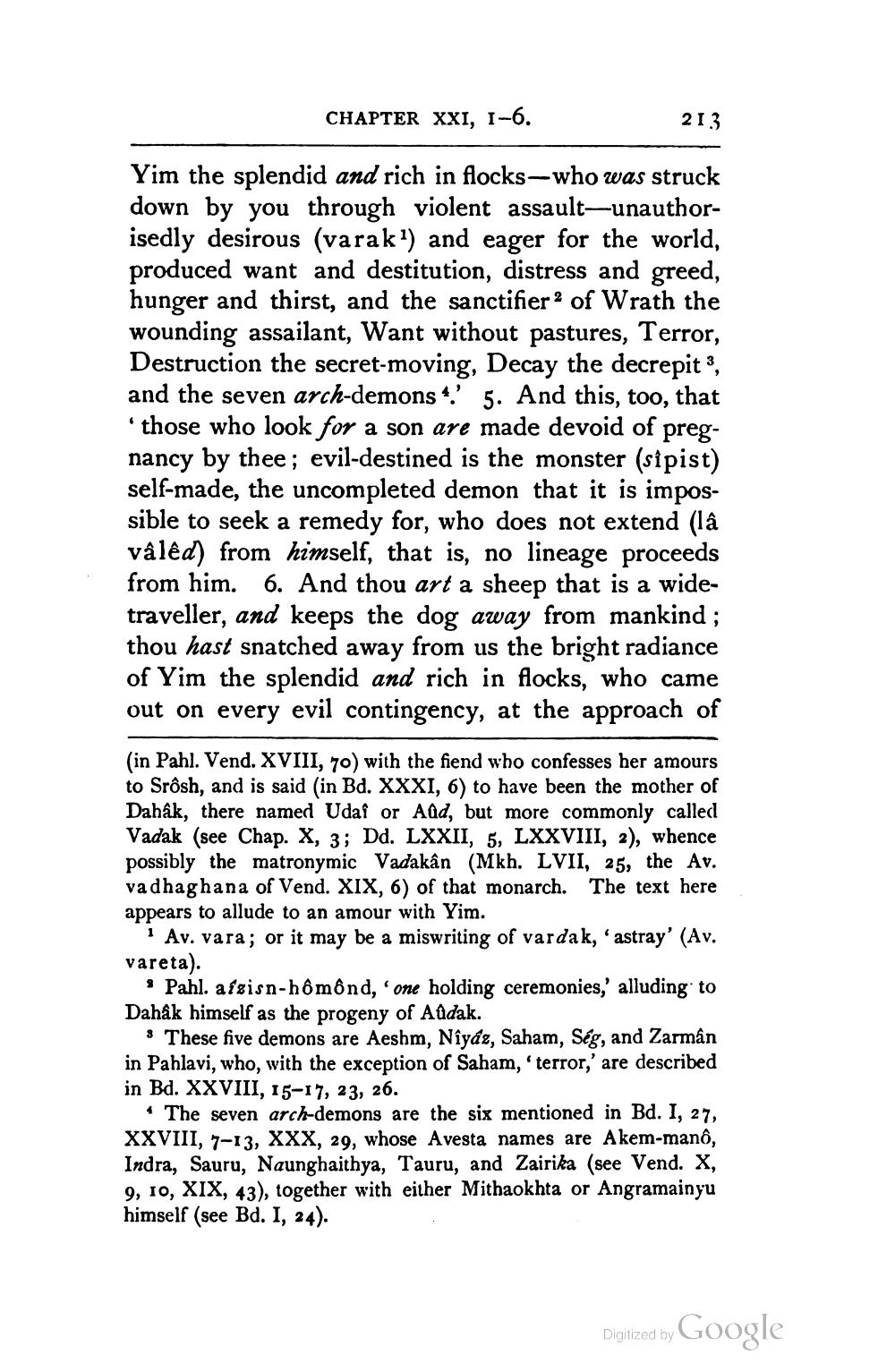________________
CHAPTER XXI, 1-6.
213
Yim the splendid and rich in flocks-who was struck down by you through violent assault-unauthorisedly desirous (varak?) and eager for the world, produced want and destitution, distress and greed, hunger and thirst, and the sanctifiera of Wrath the wounding assailant, Want without pastures, Terror, Destruction the secret-moving, Decay the decrepit 3, and the seven arch-demons*.' 5. And this, too, that
those who look for a son are made devoid of pregnancy by thee; evil-destined is the monster (sipist) self-made, the uncompleted demon that it is impossible to seek a remedy for, who does not extend (la vâlêd) from himself, that is, no lineage proceeds from him. 6. And thou art a sheep that is a widetraveller, and keeps the dog away from mankind; thou hast snatched away from us the bright radiance of Yim the splendid and rich in flocks, who came out on every evil contingency, at the approach of
(in Pahl. Vend. XVIII, 70) with the fiend who confesses her amours to Srôsh, and is said (in Bd. XXXI, 6) to have been the mother of Dahâk, there named Udai or Agd, but more commonly called Vadak (see Chap. X, 3; Dd. LXXII, 5, LXXVIII, 2), whence possibly the matronymic Vadakân (Mkh. LVII, 25, the Av. vad haghana of Vend. XIX, 6) of that monarch. The text here appears to allude to an amour with Yim.
1 Av. vara; or it may be a miswriting of vardak, 'astray' (Av. vareta).
Pahl. a írisn-hômônd, one holding ceremonies,' alluding to Dahâk himself as the progeny of Audak.
These five demons are Aeshm, Niyaz, Saham, Ség, and Zarman in Pahlavi, who, with the exception of Saham, 'terror,' are described in Bd. XXVIII, 15-17, 23, 26.
4 The seven arch-demons are the six mentioned in Bd. I, 27, XXVIII, 7-13, XXX, 29, whose Avesta names are Akem-mano, Indra, Sauru, Naunghaithya, Tauru, and Zairika (see Vend. X, 9, 10, XIX, 43), together with either Mithaokhta or Angramainyu himself (see Bd. I, 24).
Digitized by Google




